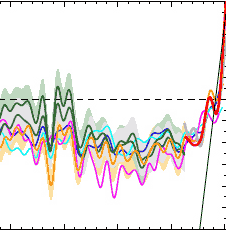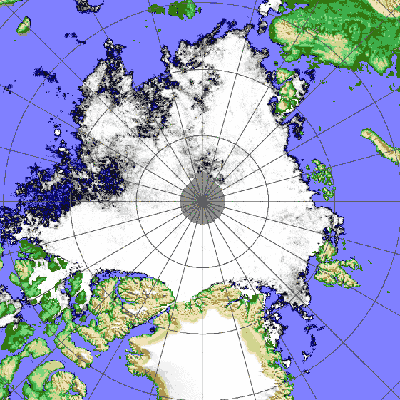The Arctic sea ice has started its autumn freeze up. Both the NSIDC and Cryosphere Today metrics show significant increases over their minima for the year, and so I’ve settled my debts to Malcolm and William “Stoat” Connolley. To settle Malcolm’s bet, I have donated $40 to Women’s Refuge (they’re sending a receipt, which I will happily post when it arrives if Malcolm so wishes), but with William I have elected to go “double or quits” on next year’s minimum. He does get a signed copy of Hot Topic though, and it should be with him by the weekend or early next week. To ensure carbon neutrality for the airmail shipping, I will plant an extra tree in the truffière… 😉
So what are the prospects for next year? Will the ice consolidate a little more, hover around the 2007 and 2008 level, or beat 2007? My gut-feel (and, in the absence of further info on how the ice finished this summer, that’s all it is) is that the odds remain roughly 50/50 on a new record. A warmer winter than last, or a sunnier summer is all that it might take to cause greater loss. So I’m happy with my double or quits – at least for the time being.
NSIDC September 24th update here (note continuing reduction in multi-year ice). NASA reports that ice loss in August was fastest ever seen – and produced an excellent animation of ice coverage over the year (in right column, third image down). Meanwhile, ice loss from Greenland is also increasing (there should be much more concrete info later this year when the 2008 summer season reports start appearing), and a team at Ohio State University are beginning the Arctic System Reanalysis project, which will “merge a decade of detailed atmospheric, sea, ice and land surface measurements into a single computer model-based synthesis. The coupling of these immense data sets will produce complex and instructive descriptions of the changes occurring across the normally frigid, remote region.” The project will generate about 350 TB of data. Won’t run on my Macbook Pro, then… Plus there’s some learning about ice going on at the blog of a real ice man – Bob Grumbine’s More Grumbine Science here.




